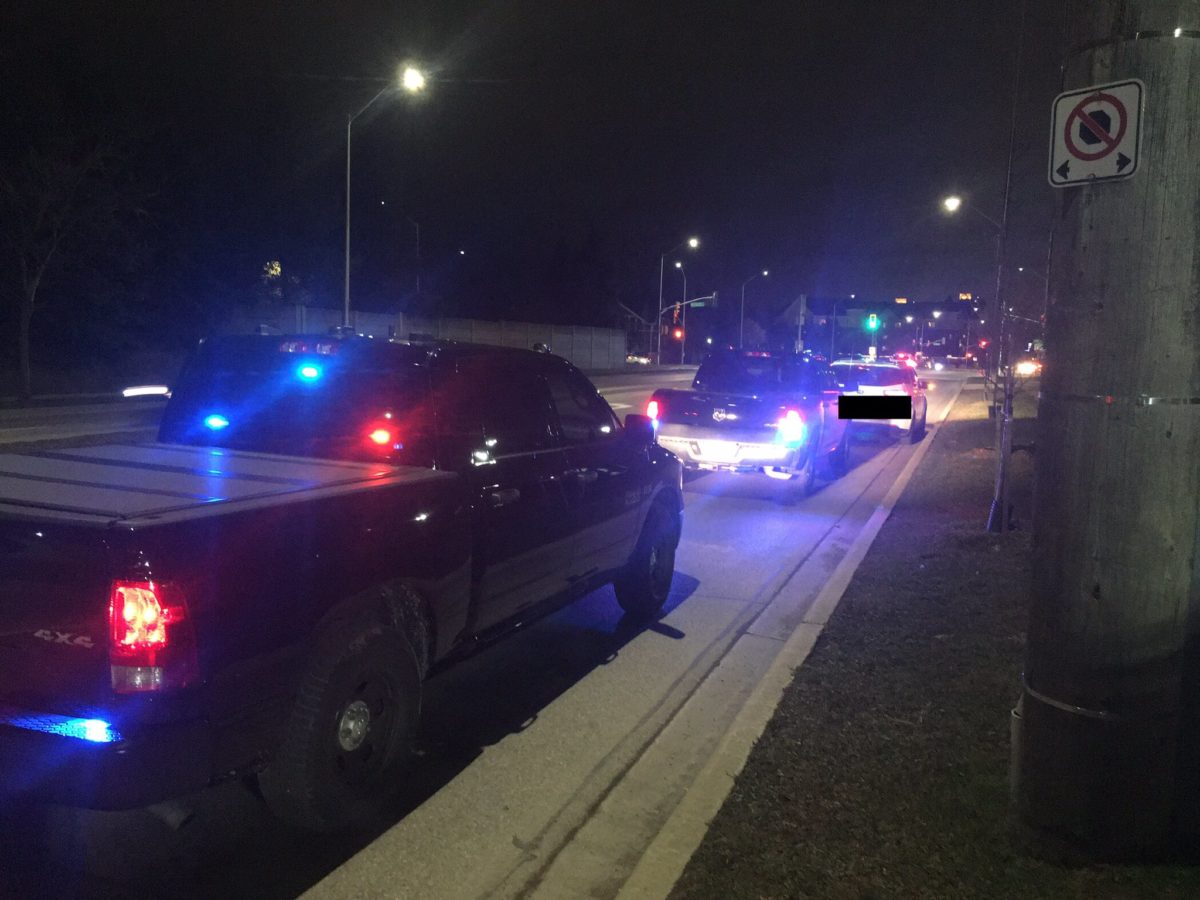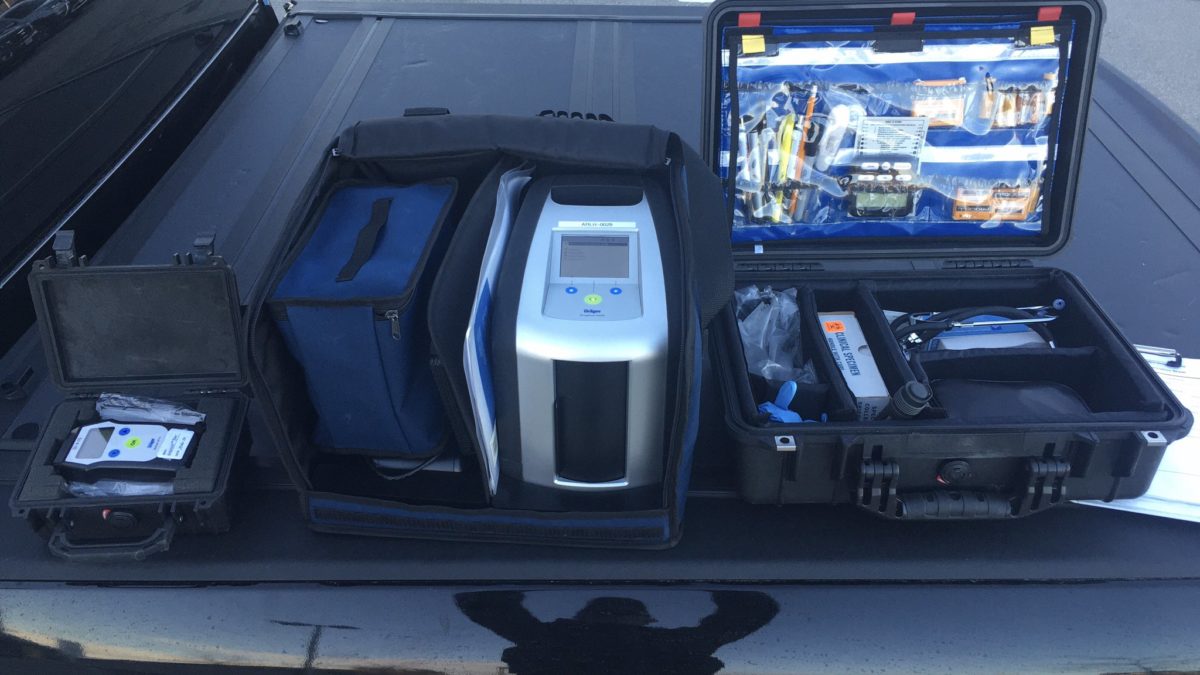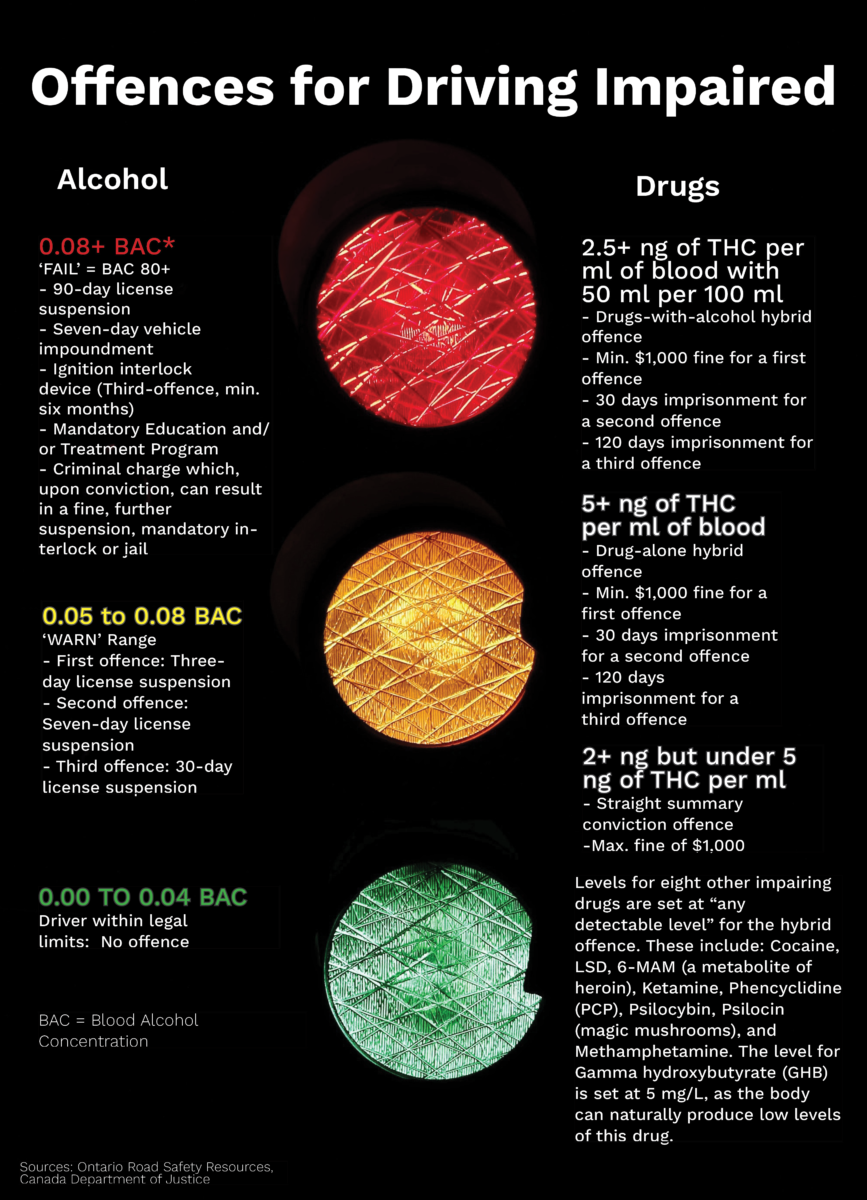Holiday RIDE campaign starts across Halton Region as number of impaired charges up over last year

With Holiday RIDE campaigns kicking off across the province, motorists should expect to see an increase in police presence on the roads in the coming weeks, and not just in the evenings.
The RIDE program, which stands for Reducing Impaired Driving Everywhere, started in Etobicoke in 1977 before expanding across the province. The campaign, which aims to take drunk drivers off our roads, started in late November and will be running until Jan. 3.
“We will actually be out and about 24 hours a day, 7 days a week, throughout the Holiday RIDE Campaign,” said Constable Marc Taraso of the Halton Regional Police Service’s Oakville Response Team. “We found that we can find impaired drivers on our roadways all day, any day.”
Last year, Halton Police saw a 16.4 per cent decrease in impaired driving charges across the region, from 532 in 2018 to 445 in 2019. However, Taraso says the numbers are already up over last year.
“We’ve had 446 incidents of impaired driving in the Region of Halton investigated by the Halton Regional Police Service […] and we are just at the start of our annual Festive RIDE Campaign, so we will see those numbers increase significantly by the end of the year, which is unfortunate.”
Halton Police credit the public for assisting with getting impaired drivers off the road by calling in one third of all impaired driving occurrences, and they continue to urge people to call 911 if they suspect someone is driving under the influence of drugs and/or alcohol.
“Impaired driving has a significant human cost on our roadways. People are killed by impaired driving, so don’t drink and drive.”
– Constable MARC TARASO/HRPS Oakville
“We would love it if people called 911 to report suspected impaired drivers. We treat that as a crime in progress — as an emergency — and officers will be dispatched to check the area to intercept that vehicle, to determine if they are impaired or not,” Taraso said. “The Dispatcher will ask the caller a series of questions including their location, a description of the vehicle, and if they can get a license plate for the vehicle. They’ll also be asked some questions about the driving abilities, so what that vehicle is doing to cause the person to suspect they’re impaired.”
What are the signs of impaired driving?
According to Taraso, a telltale sign that someone is impaired is the inability to maintain a lane. “One of the signs that people can be on the lookout for for impaired drivers include the more obvious like swerving within their lane — you’ll see a driver go from the yellow line to the curb, back to the yellow line, and repeat that back and forth, swerving along the road.”
“You might see things like their headlights turned off when they should be on, you might see braking for no reason or sudden acceleration and then braking for no reason. You might see drivers stopped at a green light, or fail to proceed when they have a green light. You might see things like drivers falling asleep behind the wheel when they’re extremely intoxicated. There’s lots of signs and symptoms for impaired driving, but when you see a driver driving poorly, swerving all over the road, stopping when they’re not supposed to, there’s a good chance they’re probably impaired to some level. You can call 911 and we’ll check them out to see if they’re safe to drive.”
How does alcohol affect your ability to drive?
“Right from the get-go — as soon as you have you first sip of alcohol — that alcohol starts to have impairment factors on your body, and one of the first things that’s targeted is your decision making abilities. Drivers are no longer able to react quickly or as efficiently as when they are sober,” Taraso said. “That is what causes collisions to happen when drivers are impaired, because they aren’t able to make decisions quick enough and react to situations that occur in front of them.”
And officers are equipped to test at the roadside
“We have two main ways of testing for impairment at the roadside. The first one is an Approved Screening Device that we use where the driver will provide a breath sample into it, and it will tell us one of three things: one is that the driver passed, the driver is in the warn range of alcohol, which means they’re between the level of 50 and 80 mg of alcohol in 100 mL of blood, and that would result in the officer to suspend that persons license for three, seven, or thirty days depending on their license classification. The next thing the device will tell us is if they fail. So if their blood alcohol concentration is in excess of 80 mg of alcohol in 100 mL of blood, then they would be arrested for impaired driving.”

With the introduction of the The Dräger DrugTest 5000 across the region, officers can also test for the presence of drugs at the roadside. “We also have approved drug screening equipment and that allows us to test young, novice, and commercial motor vehicle drivers for the presence of any drugs in their system, as those classifications of drivers have to maintain zero presence of drug in their body,” Taraso said.
Drivers can refuse to participate but its not recommended, and it can be costly
“Refusing to participate in a roadside test is a criminal offence and drivers will face the same penalties at court if they’re found guilty that an impaired driver would face,” Taraso said.
He adds, “If you’re going to drink or participate in recreational drug use, do not drive. The cost of a taxi or Uber far outweighs even the smallest cost of the administrative penalty issues by the MTO for an impaired driving charge, which is $550. And that is just the administrative penalty. Then there is $281 license reinstatement fee; there’s a penalty ranging from $1000 to $3000 for an impaired driving conviction; there’s the cost of having an interlock device installed in your vehicle; there is the risk of jail time; and then there’s the cost of a lawyer. A taxi may cost you $100, so please if you’re going to drink, do not drive. Impaired driving has a significant human cost on our roadways. People are killed by impaired driving, so don’t drink and drive.”
Note: This interview was conducted on Saturday, Dec. 5, 2020 in Oakville, across the street from the scene of a pedestrian fatality. The driver involved in the collision was arrested by Halton Regional Police and has since been charged with impaired operation causing death.

Infographic by Ramona Leitao
